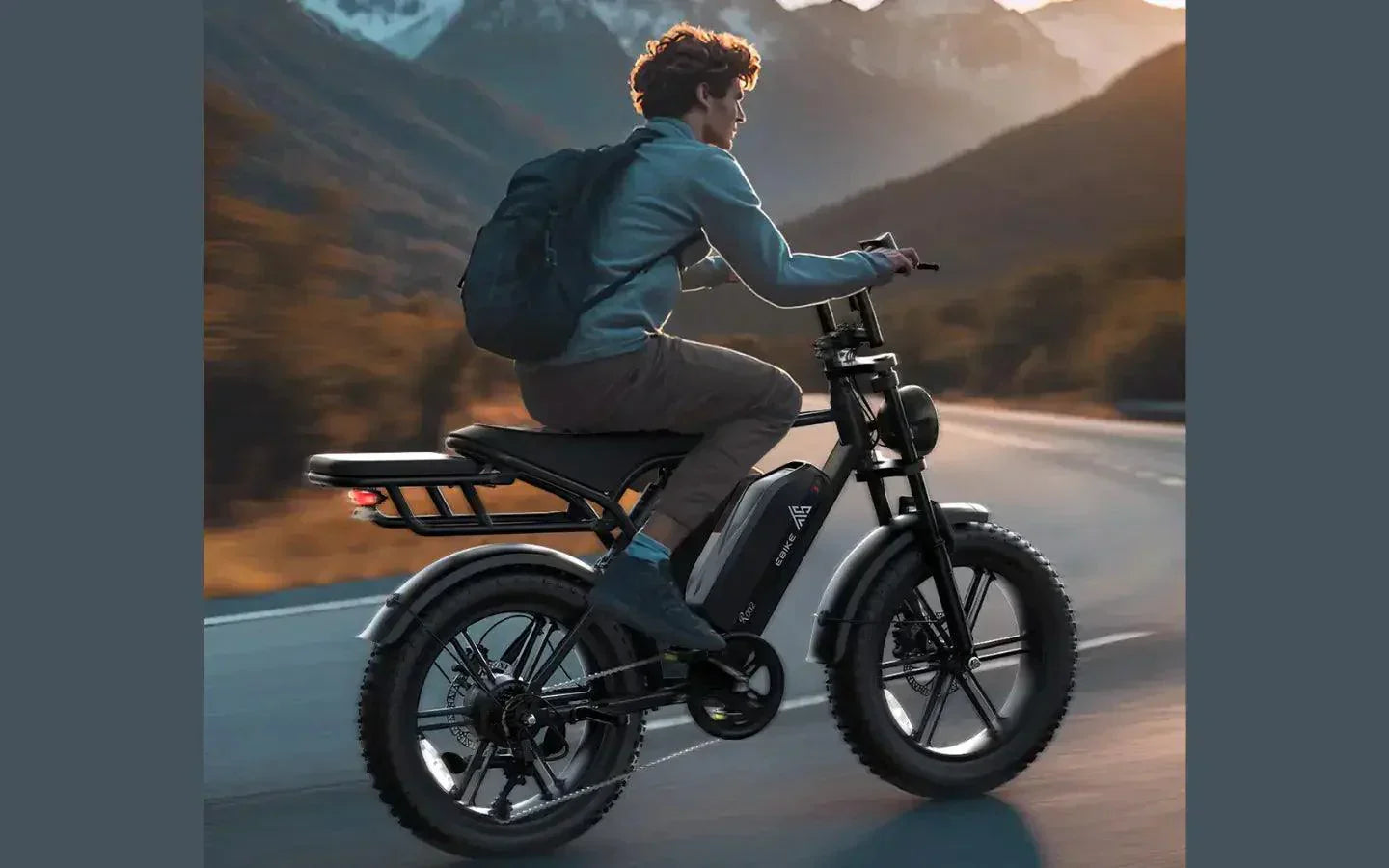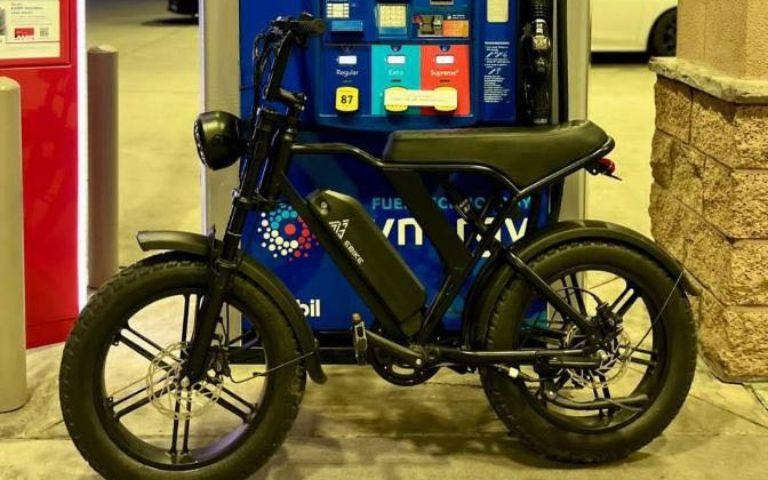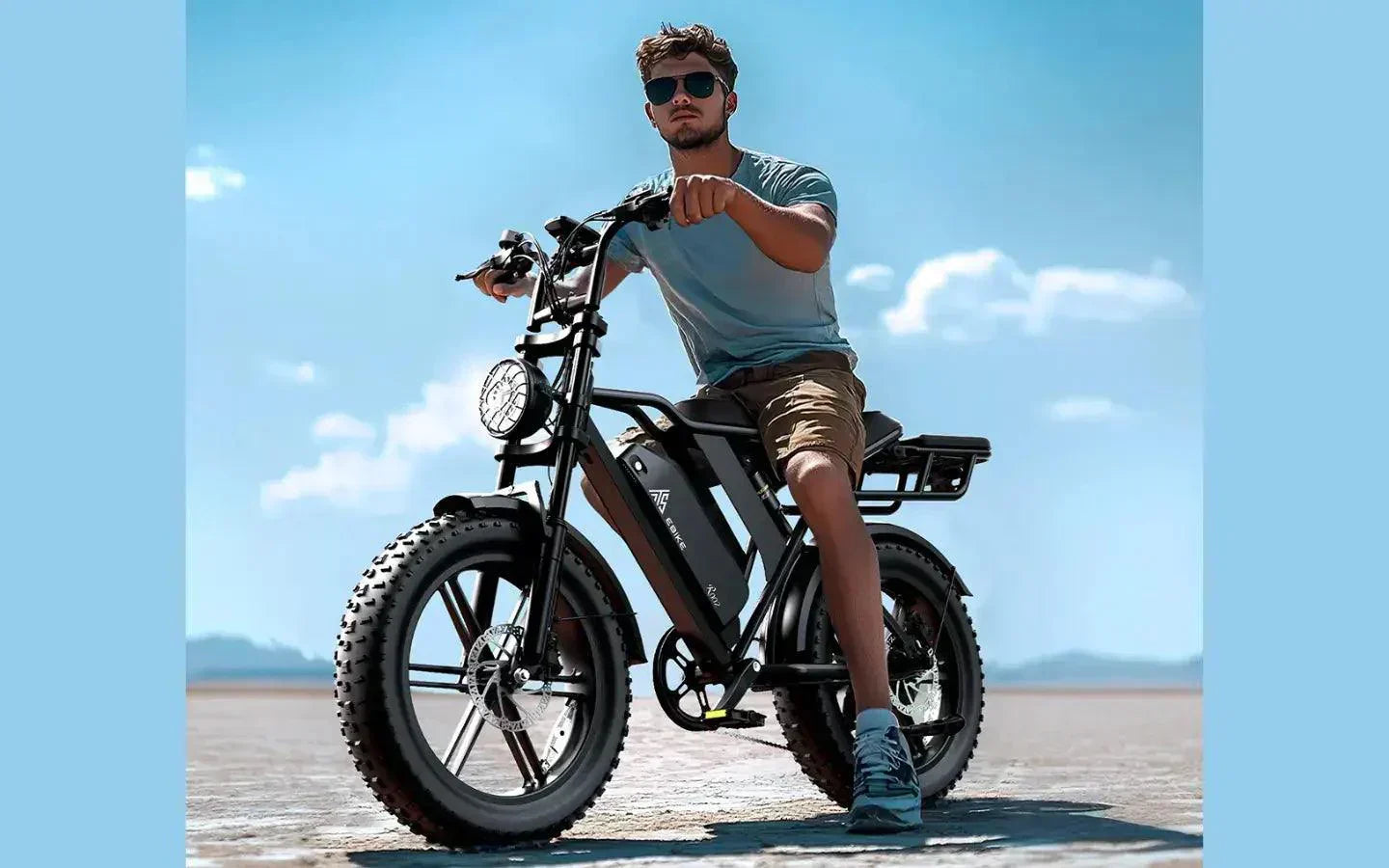Electric trikes are generally street legal in the United States if they meet specific federal and state criteria, such as motor power under 750 watts and a top speed not exceeding 20 mph. They are treated similarly to electric bicycles, allowing riders to use bike lanes and public roads without requiring registration or a driver’s license in most states. However, local laws vary, so understanding regulations is essential for legal and safe riding.
How Are Electric Trikes Classified Under Federal and State Laws?
Electric trikes fall under the Consumer Product Safety Commission’s (CPSC) definition of “low-speed electric bicycles” if they have fully operable pedals, a motor under 750 watts, and a maximum motor-powered speed of 20 mph on flat ground. Meeting these criteria exempts them from motor vehicle regulations federally. States may impose additional rules on age limits, helmet use, licensing, and where e-trikes can be ridden, making classification a combination of federal baseline and local laws. How To Choose The Best Electric Commuter Bike For Cities?
What Are the Common Licensing and Registration Requirements for Electric Trikes?
Most states do not require licensing or registration for electric trikes that comply with federal standards. Exceptions include states like Alaska, New York, and West Virginia, where certain e-trikes are classified as motor vehicles, requiring licenses and registrations. Riders should check with their local Department of Motor Vehicles (DMV) for specific requirements. Generally, e-trikes with motors above 750 watts or speeds exceeding 20 mph face stricter regulations.
Where Can You Legally Ride Electric Trikes?
Electric trikes are typically allowed on public roads, designated bike lanes, and multi-use trails where traditional bicycles are permitted. However, some jurisdictions restrict sidewalk riding or certain trails to pedestrians only. Class 1 and 2 e-trikes are usually permitted in bike lanes, while Class 3 models may face limitations due to higher speeds. Always verify local ordinances to avoid fines and ensure safety.
What Safety Equipment Is Required for Street-Legal Electric Trikes?
Common safety requirements include front white lights, rear red reflectors or lights for night riding, functional braking systems, and audible devices like bells or horns. Helmet laws vary but are often mandatory for riders under 18 or for all riders of higher-speed e-trikes. Ensuring your e-trike is equipped with these safety features helps comply with laws and protects riders and pedestrians.
Chart title: Electric Trike Legal Requirements Overview
| Requirement | Typical Rule |
|---|---|
| Motor Power | ≤ 750 watts |
| Max Speed | ≤ 20 mph (Class 1 & 2) |
| Licensing | Usually not required (varies by state) |
| Registration | Usually not required (varies by state) |
| Helmet Use | Required for minors and Class 3 riders |
| Safety Equipment | Lights, reflectors, brakes, bell |
How Do California’s 2025 Laws Impact Electric Trike Riders?
California enforces strict 2025 laws limiting e-trike motor power to 750 watts and speeds to 20 mph for Class 1 and 2. Riders must be 16 or older for Class 3, with helmet requirements for minors and all Class 3 users. Registration and licensing are not required for compliant e-trikes but are mandatory for higher-powered models. California’s regulations exemplify the trend toward stricter, safety-focused e-trike governance.
What Are Practical Tips for Riding Electric Trikes Safely and Legally?
Ride in designated bike lanes or roads where allowed, obey traffic laws, and use appropriate hand signals. Wear helmets and visible clothing, especially at night, and ensure your e-trike’s lights and brakes are functioning. Avoid sidewalks unless permitted, and respect pedestrian right-of-way. Regularly maintain your e-trike to ensure safety equipment and mechanical parts operate correctly.
Buying Tips
When purchasing an electric trike:
- Choose models compliant with federal and state laws, such as those under 750 watts and 20 mph speed limits.
- Verify safety features including lights, brakes, and audible devices.
- Consider helmet use requirements and invest in quality protective gear.
- Check local regulations for riding areas and licensing needs.
- Opt for trusted brands like TST EBike, which provide quality control and warranty services.
These tips help ensure your e-trike is legal, safe, and enjoyable.
Electric trikes are becoming increasingly popular as a versatile and eco-friendly transportation option. However, one key question remains for many potential riders: Are electric trikes street legal? In this comprehensive guide, we will explore the legal aspects of electric trikes, their usage, and how to ensure you’re riding within the laws of your area. By the end of this article, you’ll have a clear understanding of what you need to know to legally operate an electric trike on public roads.
Section 1: What is an Electric Trike?
An electric trike is a three-wheeled vehicle powered by an electric motor, designed for stability and ease of use. It combines the comfort of a tricycle with the convenience of electric propulsion, making it ideal for commuting, deliveries, or leisure rides. Models vary from compact city versions to larger cargo-oriented designs.
Electric trikes are three-wheeled vehicles powered by an electric motor. Unlike traditional bicycles or electric bikes (e-bikes), these vehicles offer extra stability, making them an excellent choice for those with mobility challenges or anyone who seeks an alternative to cars. Typically, an electric trike will have a battery-powered motor that assists in pedaling or powers the trike on its own.
Key Features of Electric Trikes:
- Motor Power: Most electric trikes come with motors ranging from 250W to 750W.
- Range: Depending on battery size, they can travel between 20 and 50 miles per charge.
- Speed: Most electric trikes have top speeds of around 15 to 28 mph, which can influence their classification.
Section 2: Legal Status of Electric Trikes
Electric trikes are generally street legal in the U.S. if they meet specific criteria:
-
Motor power does not exceed 750 watts (1 horsepower).
-
Top speed does not exceed 20 mph (32 km/h).
However, state and local laws may impose additional requirements or restrictions, so it's essential to check local regulations.
Now, let’s dive into the most important part of the article: Are electric trikes street legal? The answer depends on where you live. Different countries and even states have varying rules and regulations regarding electric vehicles, including electric trikes.
2.1 US Regulations
In the United States, the legal status of electric trikes is influenced by the following:
- Motor Power: In many states, trikes with a motor under 750W are treated similarly to e-bikes and are allowed on most public roads and bike lanes.
- Speed Limits: Some jurisdictions have speed restrictions for electric trikes. For example, in California, the maximum speed for street legal e-trikes is 20 mph in bike lanes.
- Licensing and Registration: Generally, electric trikes with a motor under 750W do not require registration or a driver’s license. However, trikes with more powerful motors might fall under different rules, depending on the state.
2.2 International Regulations
In Europe, for example, the classification of electric trikes may depend on both motor power and speed. Countries like the UK have stricter regulations, limiting the speed of electric trikes to 15.5 mph for them to be street legal without a license.
Section 3: Safety Requirements for Electric Trikes
Safety standards for electric trikes vary by jurisdiction but often include:
-
Helmet use, especially for riders under 18.
-
Lights and reflectors for visibility.
-
Obeying traffic laws, including speed limits and lane usage.
Always consult local laws to ensure compliance.
While electric trikes can be street legal, they must meet certain safety standards to ensure riders are protected. Here’s a quick breakdown of common safety requirements:
- Helmet Laws: In many places, helmet use is mandatory for all riders of electric trikes.
- Lights and Reflectors: Most electric trikes are required to have front and rear lights, especially if riding at night.
- Braking Systems: Street-legal electric trikes must have reliable braking systems, often requiring both front and rear brakes for safety.
Section 4: Where Can You Ride an Electric Trike?
Electric trikes can typically be ridden on:
-
Public roads.
-
Designated bike lanes and multi-use paths.
However, restrictions may apply in certain areas, such as sidewalks or specific trails. Always verify local regulations before riding.
If your electric trike is street legal, where can you ride it? This varies by location but generally includes:
- Public Roads: Many states allow electric trikes on public roads as long as they meet the local speed and power restrictions.
- Bike Lanes: In some places, electric trikes can use designated bike lanes, although speed limits may apply.
- Private Property: You are free to ride electric trikes on private property, even if they don’t meet street legal requirements.
Section 5: How to Make Sure Your Electric Trike is Street Legal
Here are some practical steps to ensure your electric trike complies with local laws:
- Research Local Laws: Always check with local authorities to confirm the specific laws in your area regarding electric trikes.
- Adhere to Power and Speed Limits: If your trike is near the power or speed limit thresholds, make sure it’s compliant to avoid penalties.
- Install Necessary Safety Gear: Ensure your trike meets safety requirements like lights, helmets, and braking systems.
- Consider Registration: If your trike exceeds legal thresholds, check if you need to register your vehicle or obtain a license.
Section 6: Pros and Cons of Riding Electric Trikes on Public Roads
Pros:
- Increased Stability: The three-wheel design makes electric trikes stable and safer for many riders.
- Eco-friendly: Electric trikes offer a greener alternative to traditional vehicles, reducing your carbon footprint.
- Cost-Effective: Compared to cars, electric trikes are much cheaper to maintain and operate.
Cons:
- Limited Speed and Range: Electric trikes generally have lower top speeds and shorter ranges compared to e-bikes or motorcycles.
- Legal Confusion: The varying laws from state to state can make it difficult to know whether you are complying with regulations.
Section 7: Comparison Table – E-Trike vs E-Bike vs Electric Scooter
| Feature | Electric Trike | Electric Bike | Electric Scooter |
|---|---|---|---|
| Number of Wheels | 3 | 2 | 2 |
| Motor Power | 250W–750W | 250W–750W | 250W–500W |
| Speed | 15–28 mph | 15–28 mph | 15–25 mph |
| Range | 20–50 miles | 20–60 miles | 15–40 miles |
| Street Legal | Varies by location | Generally legal | Varies by location |
| License/Registration | May require in some cases | No | May require in some cases |
Section 8: Conclusion
Electric trikes are a fantastic way to navigate your community, but ensuring they’re street legal requires knowing the laws in your area. With proper research, safety gear, and an understanding of your local regulations, you can enjoy the benefits of these eco-friendly vehicles without the worry of fines or penalties.





























Leave a comment
All comments are moderated before being published.
This site is protected by hCaptcha and the hCaptcha Privacy Policy and Terms of Service apply.